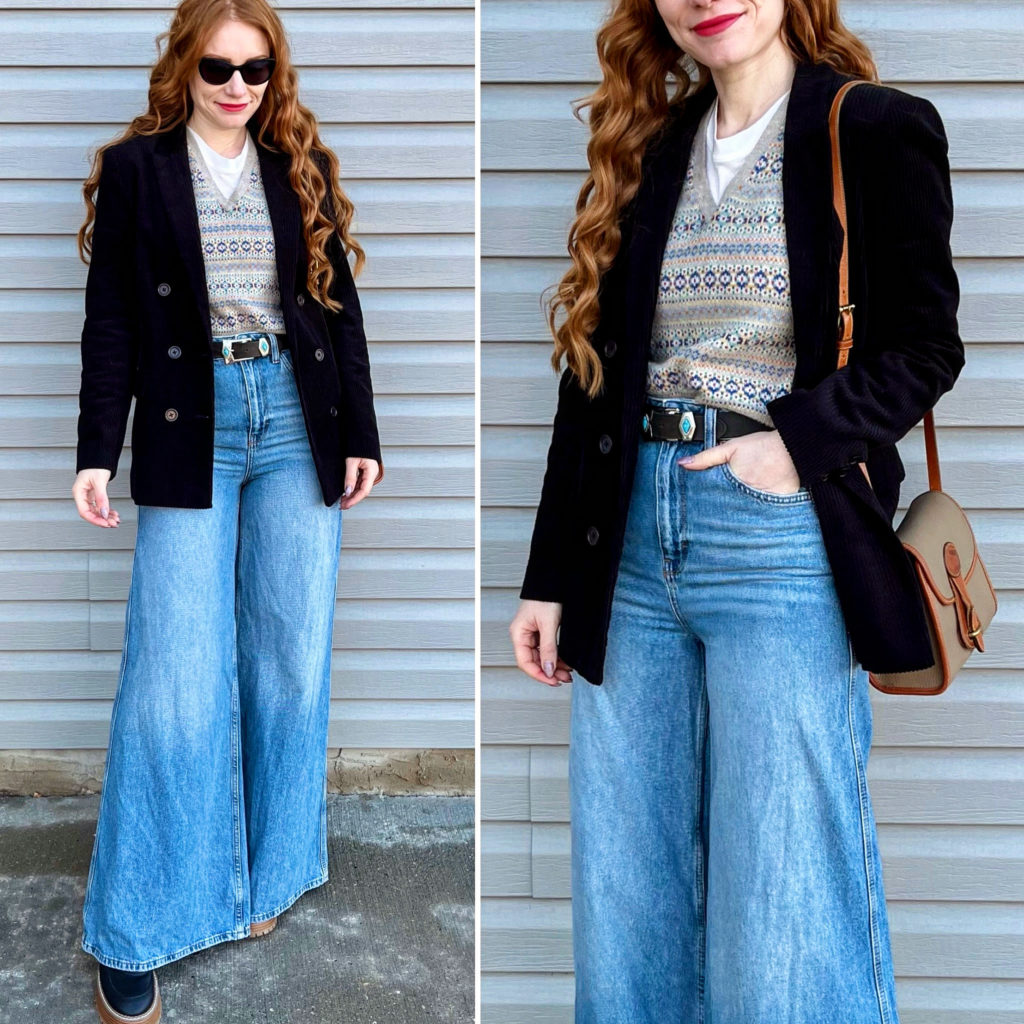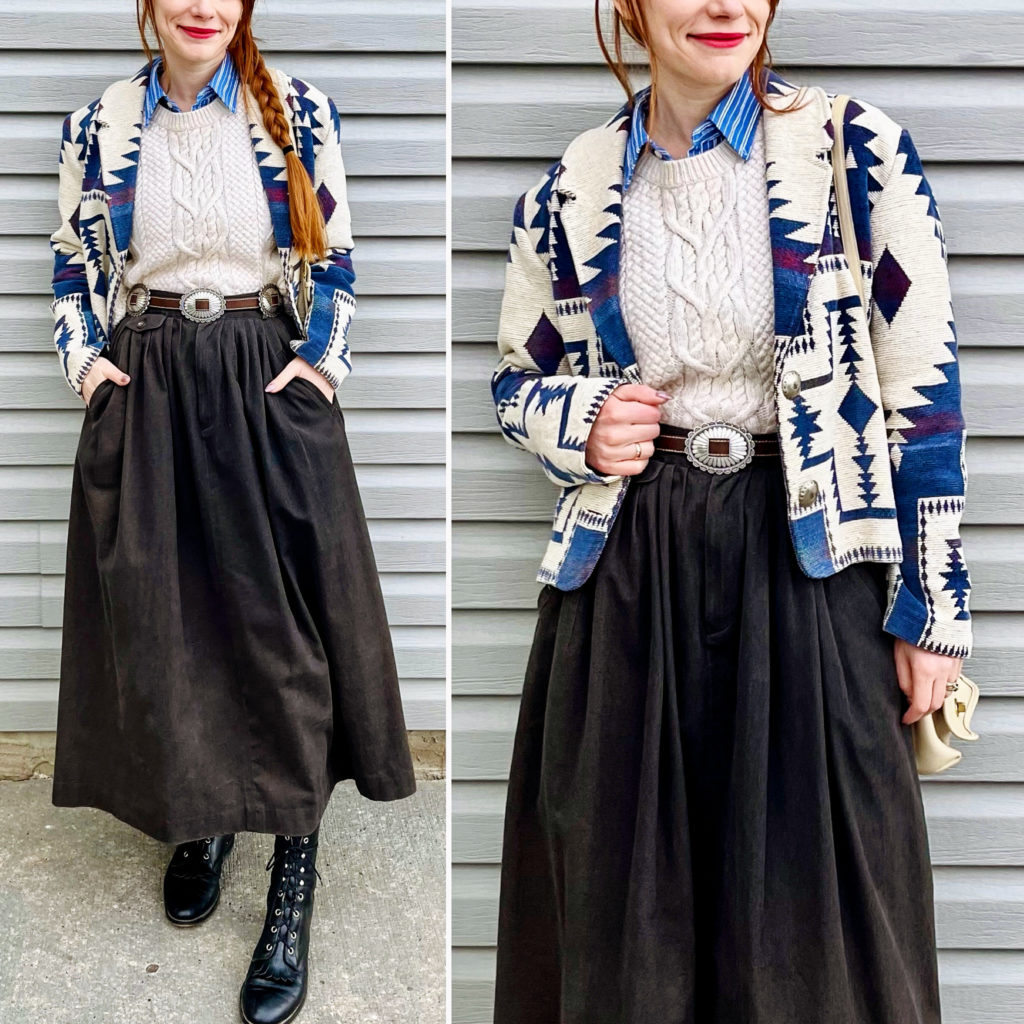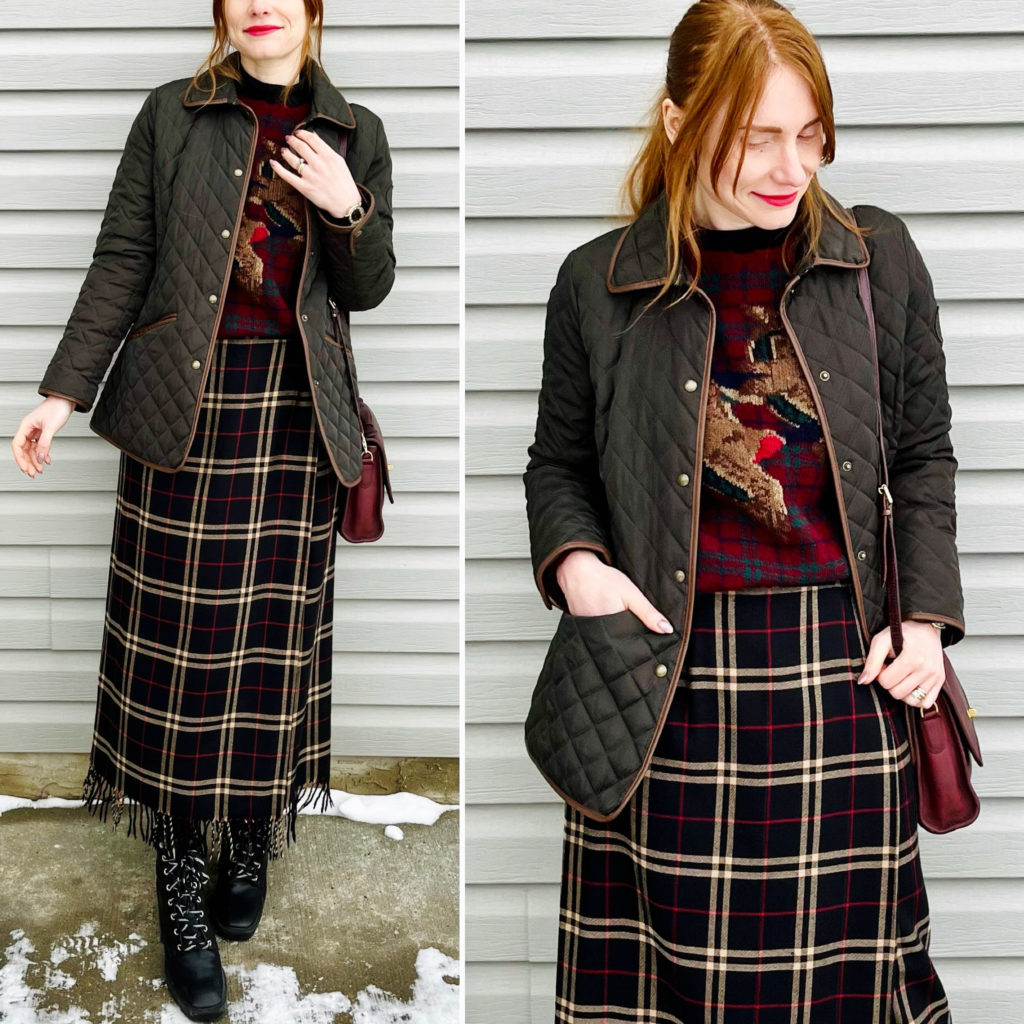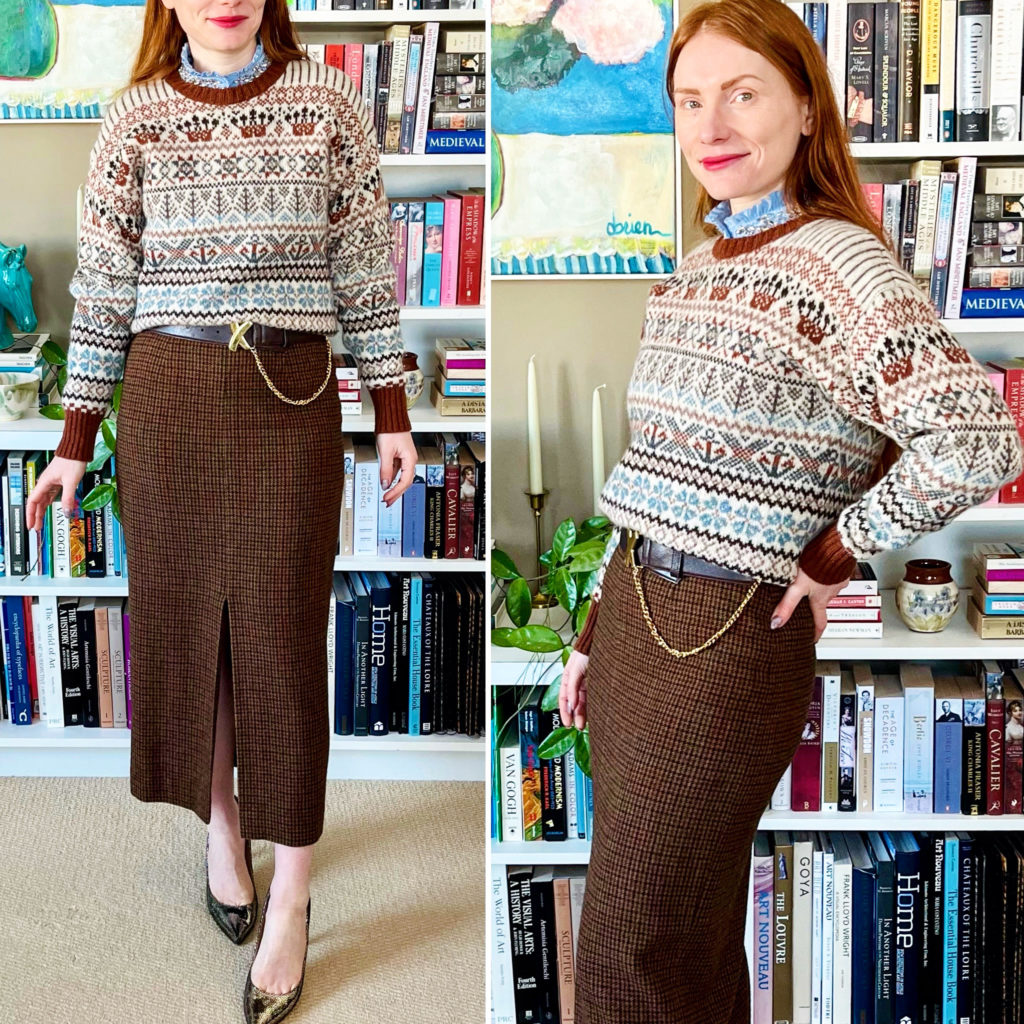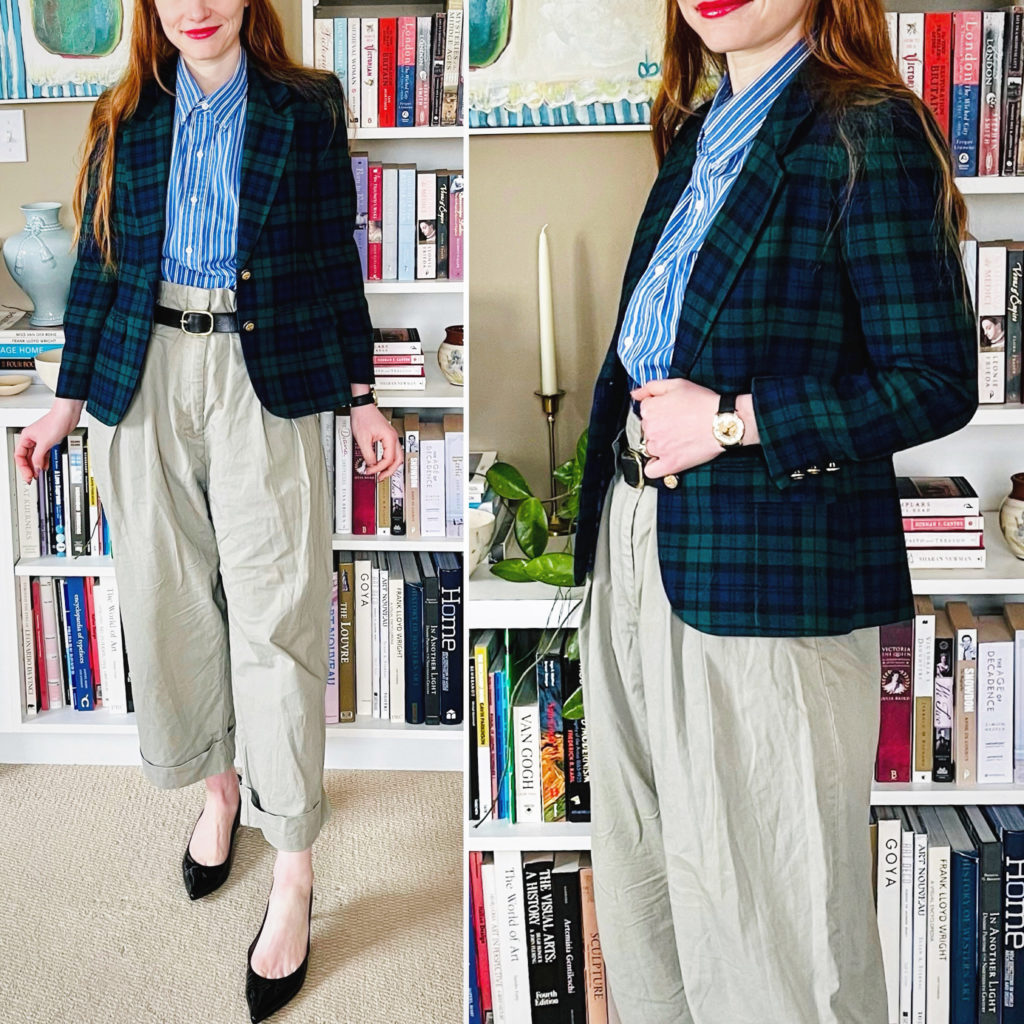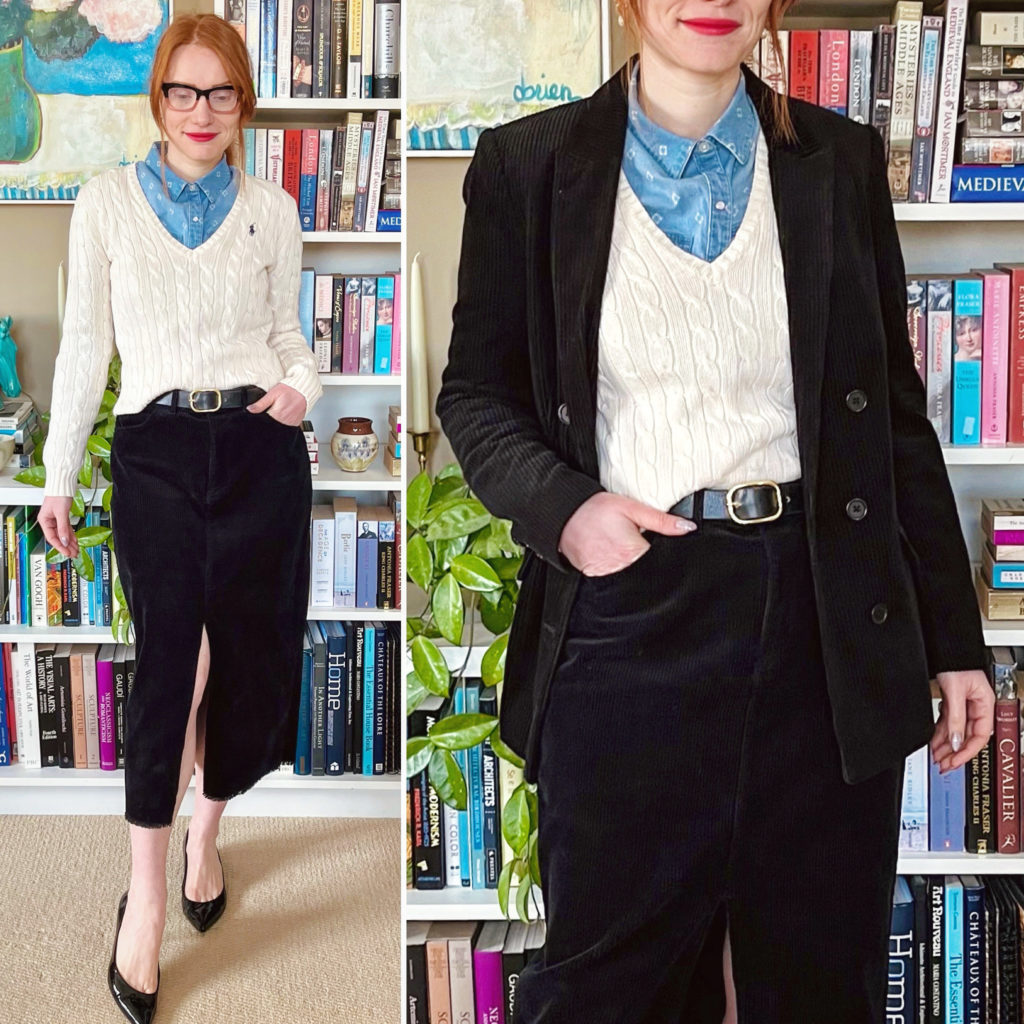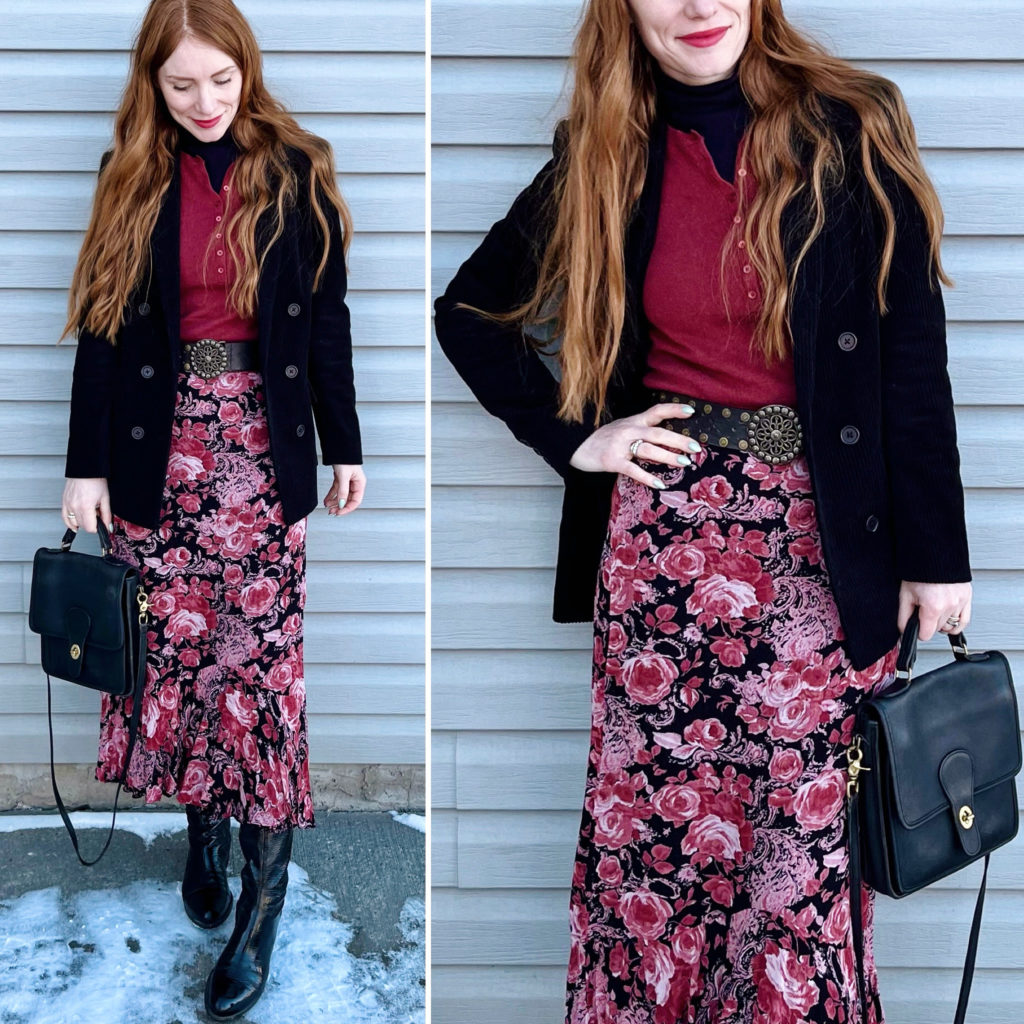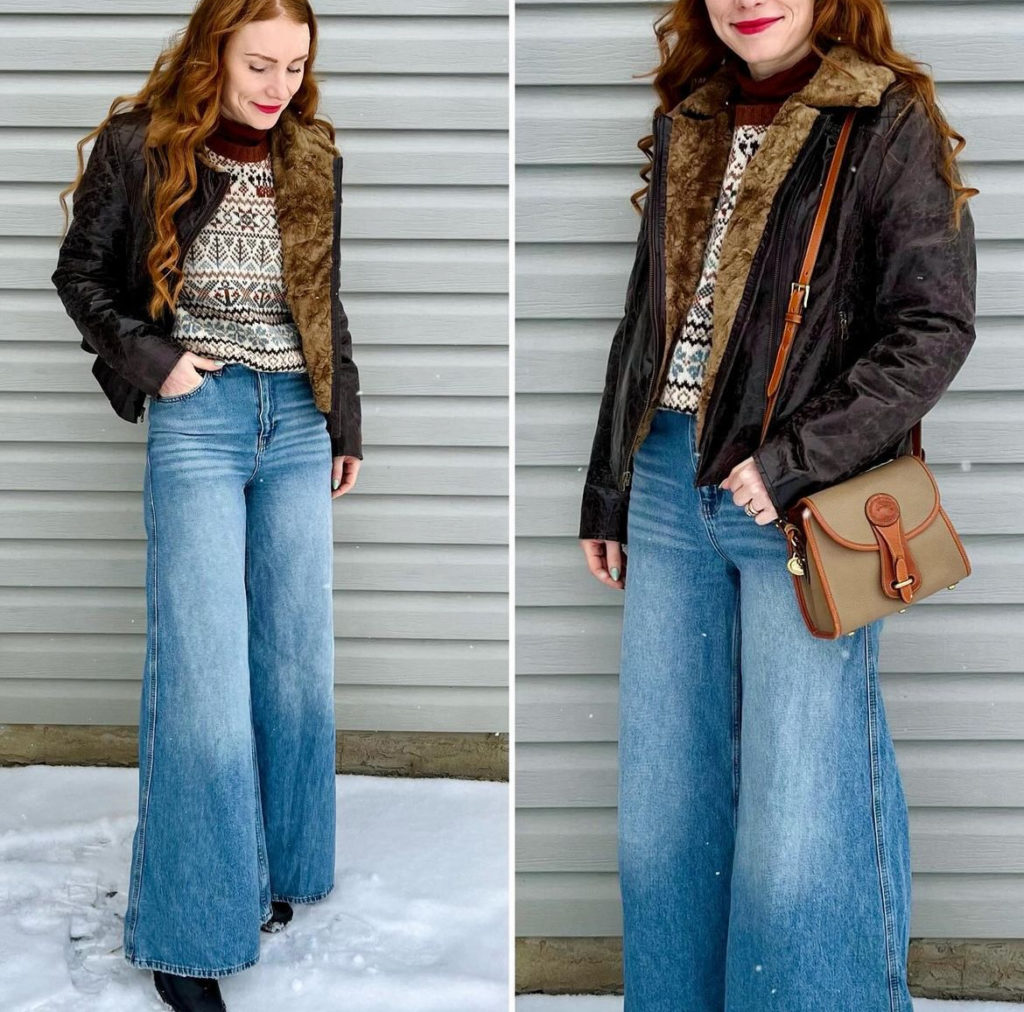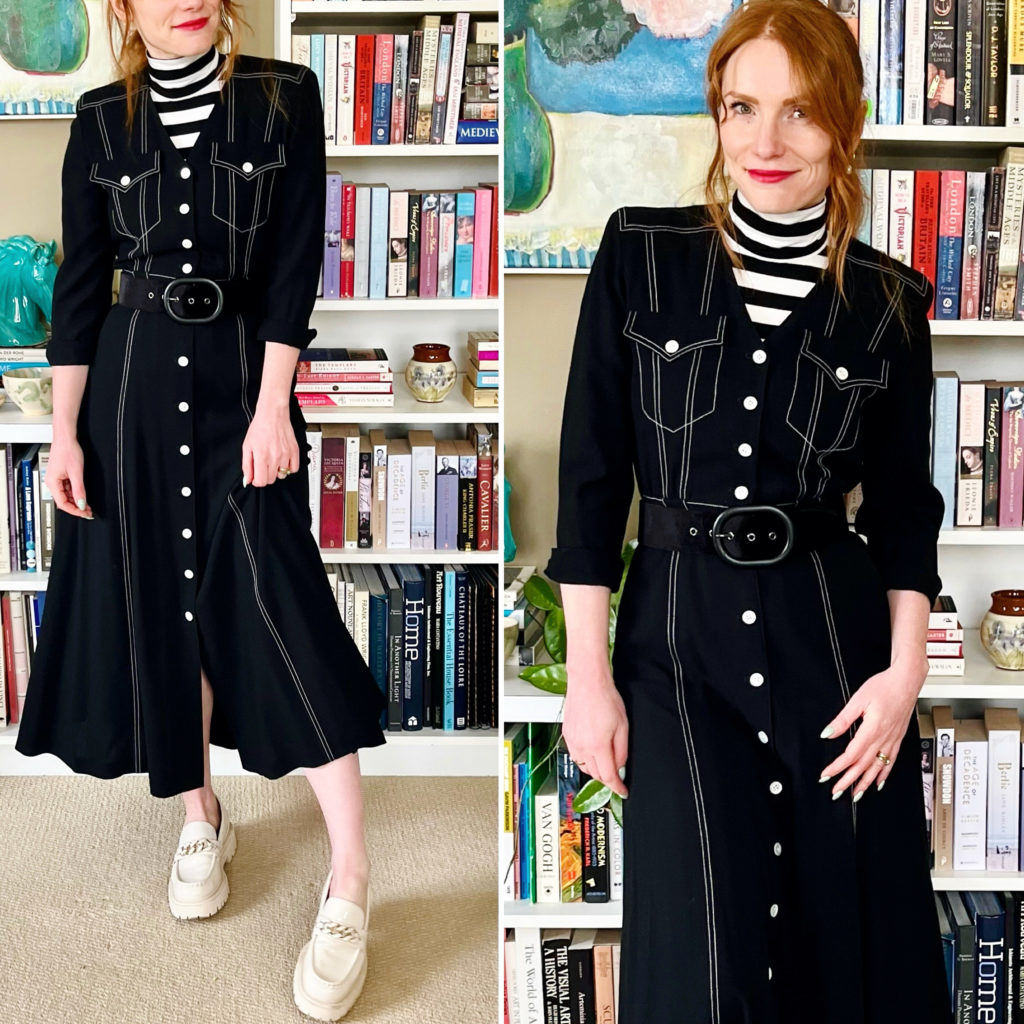
Details: Club Monaco turtleneck, Escada dress, Rebecca Minkoff belt, Aldo shoes (all thrifted)
Thoughts: I thrifted this vintage Escada dress years ago (circa 2017) but it’s been hanging in my archive closet for a long time. It’s a beautifully made and cut dress, but despite being seemingly plain, it’s anything but. The detailing makes it special but it also makes it a challenge to style. The good news is that I’m on something of a 70s kick at the moment, so I’ve got more ideas for this than before. Starting with this outfit, which is pretty simple but quite effective, if I do say so myself. Key details: the striped turtleneck adds a funky, modern touch; the belt perfectly complements the dress details; and the loafers keep the whole look from being too serious.
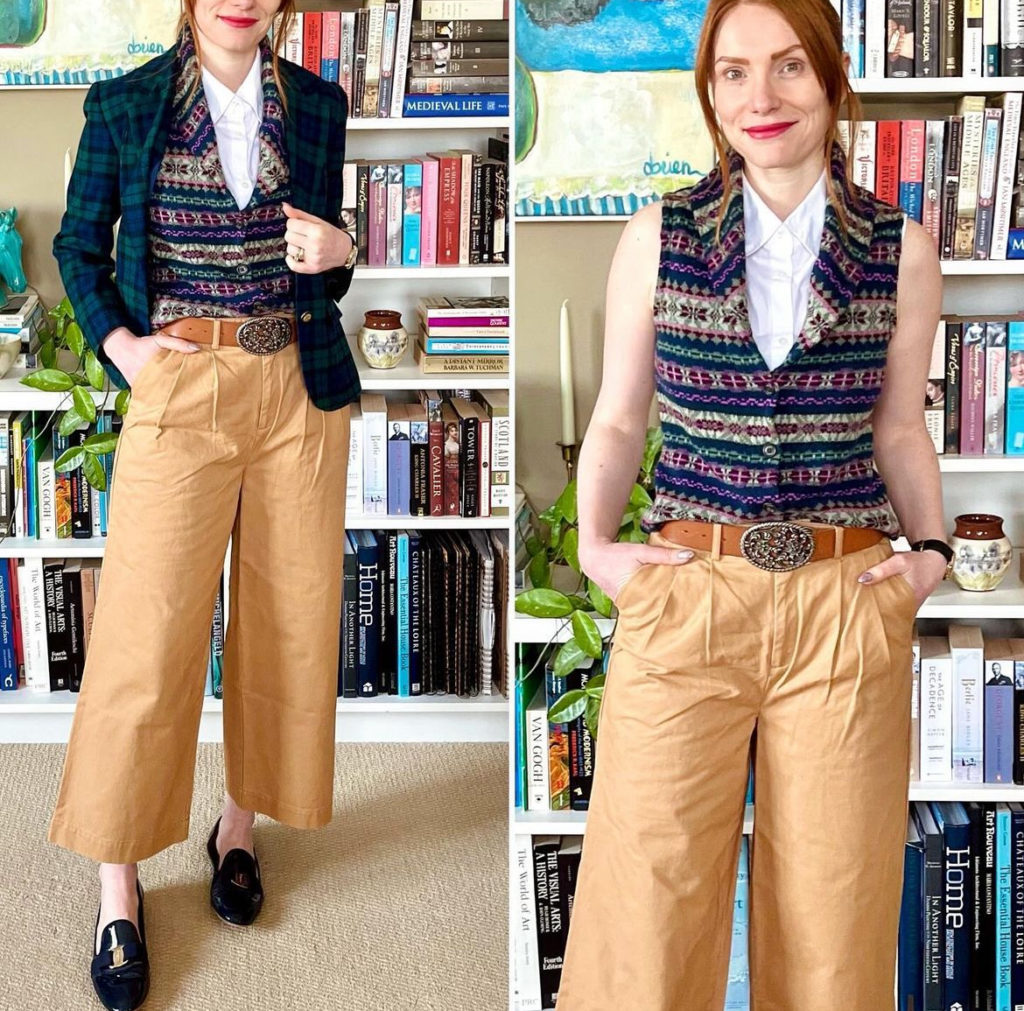
Details: Toni T dickie, Ralph Lauren vest, Pendleton blazer, Esprit belt, Icone pants, Ferragamo shoes (all secondhand)
Thoughts: I love the colour palette-inspired pattern mix of the vest and blazer — it felt very satisfying. I’m finding khaki/tan pants to be one of the most versatile options when I’m doing one of these prep-coded looks. Technically, this pair is more camel in tone, which was an intentional choice on my part when I thrifted them. I have a light khaki pair already, so adding this one to my wardrobe expands my colour-matching options. Some palettes work better with a cooler-toned neutral (i.e. my other pants), others with a warmer-toned one (i.e. these pants).
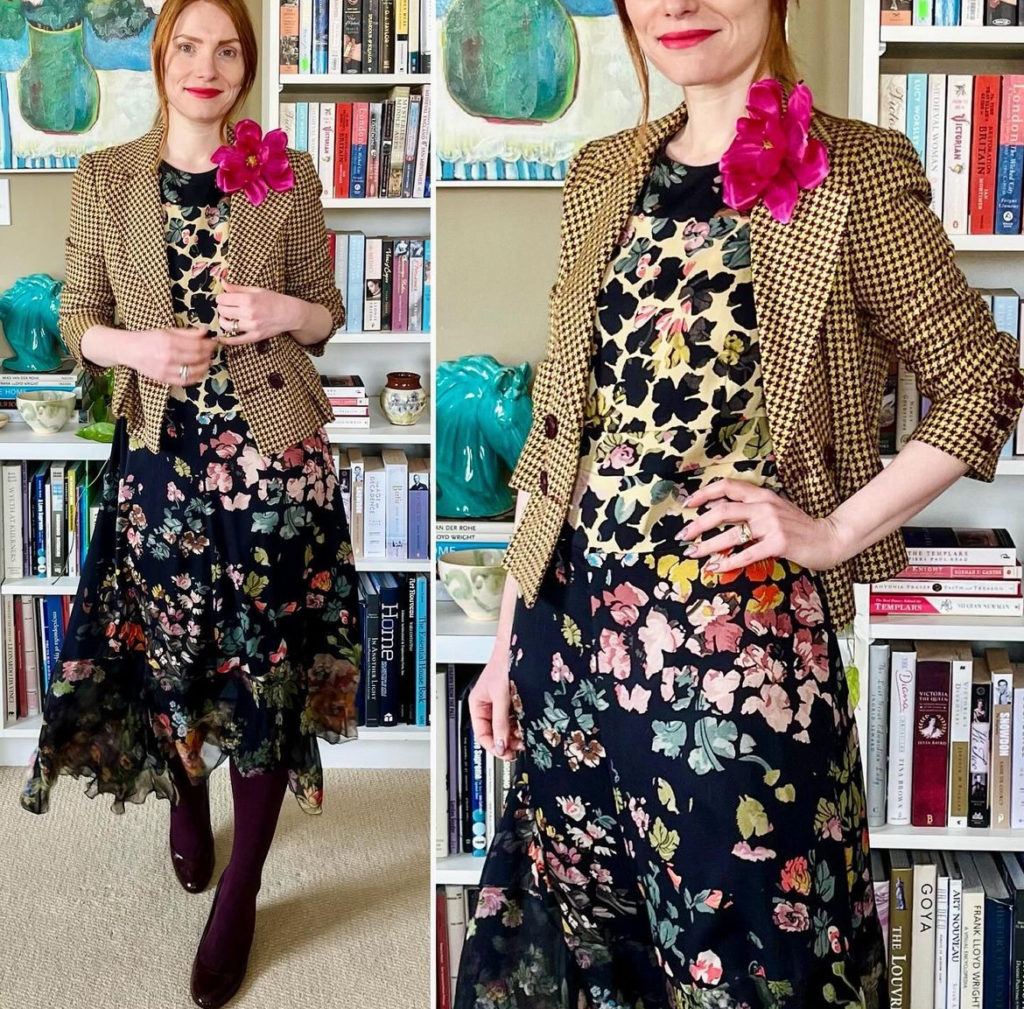
Details: Dries Van Noten dress (eBay), Nanette Lepore blazer (thrifted), J. Crew shoes (retail, old)
Thoughts: Here’s another dress I brought back from the archive closet recently. Even if I don’t wear it constantly or even consistently, I know this is a piece will have have for the rest of my life. Especially now, with the news of Dries Van Noten’s retirement, I am so grateful to have the chance to experience a little piece of his artistic genius for myself. This dress was actually part of his SS 2014 runway collection, which is very neat. Can you believe it’s 10 years old? Still looks and feels amazing. For this outfit, I wanted a subtle pattern mix and decided to pull the yellow from the dress print via this cute little jacket. I still felt like the outfit needed a bit more contrast, so I added the fuchsia flower pin. I hope Mr. Van Noten would approve.
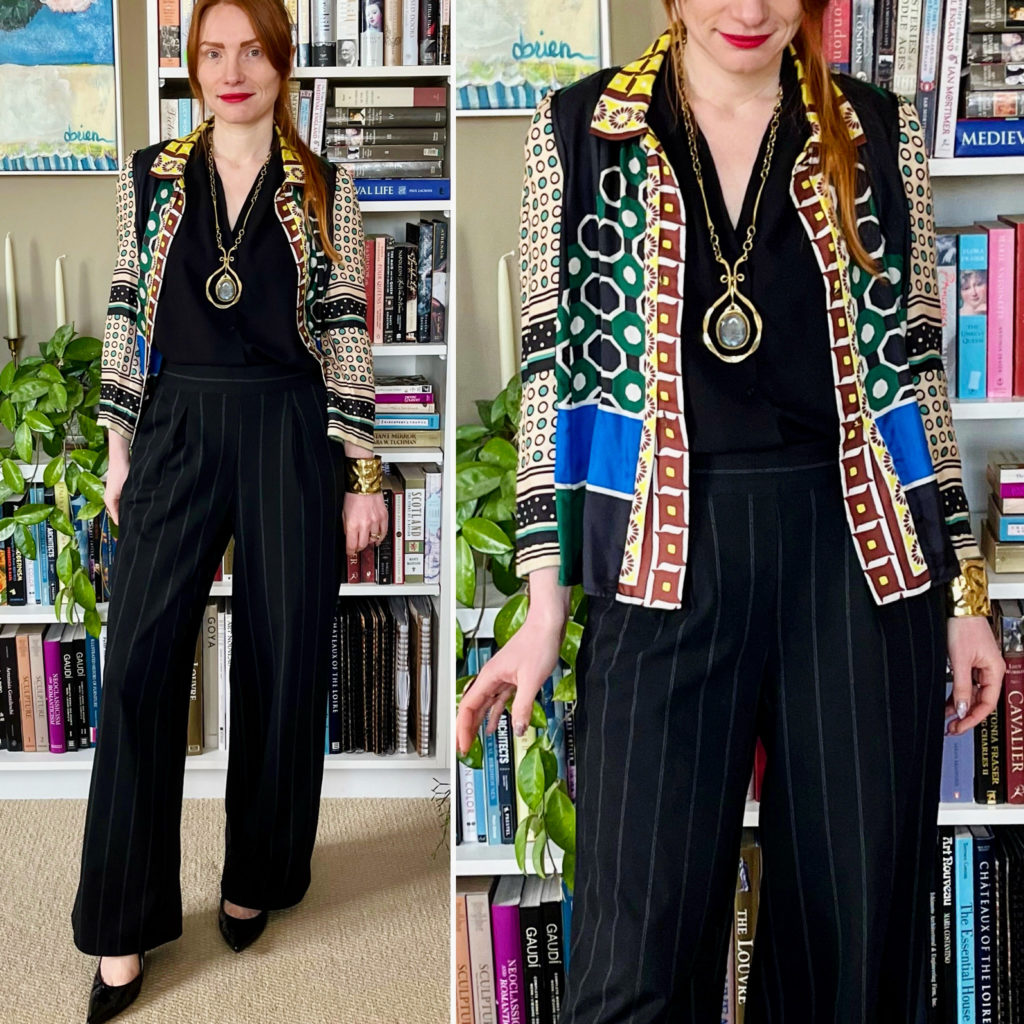
Details: Babaton top, Marni shirt, Max Studio pants, Rafael Alfandary necklace (all secondhand)
Thoughts: Even more subtle pattern mixing! It’s been a long time since I’ve done a “column of black” outfit, and technically it’s not solid black, since the pants are pinstriped. The goal was to do a very simple, casual, comfortable outfit — the pants have an elasticized waistband at the back, so while they look dressy, they’re actually just glorified sweatpants — but add just a touch of glam. The silk shirt (cut like a jacket) and the bold necklace did the trick.
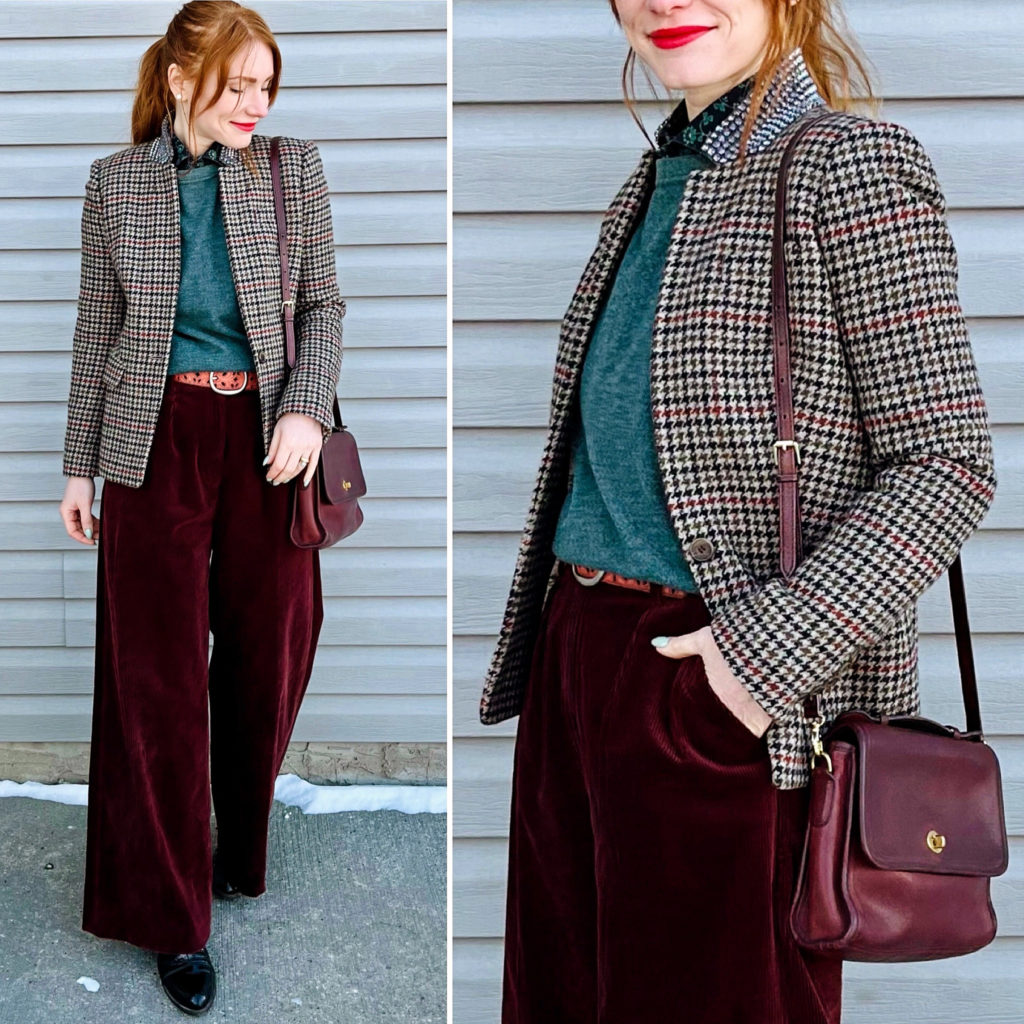
Details: Etro shirt, TSE sweater, Fossil belt (all thrifted), J. Crew jacket (retail old), Banana Republic pants (retail), Coach bag (Poshmark)
Thoughts: I’ve worn different versions of this outfit several times, only changing up the sweater and the belt … and it works like a charm every damn time. Having done a mustardy yellow and a burgundy before, I thought it would be interesting to go to the other end of the colour spectrum and choose a cool colour. This teal green is a lovely complement to the mahogany brown of the pants and bag.
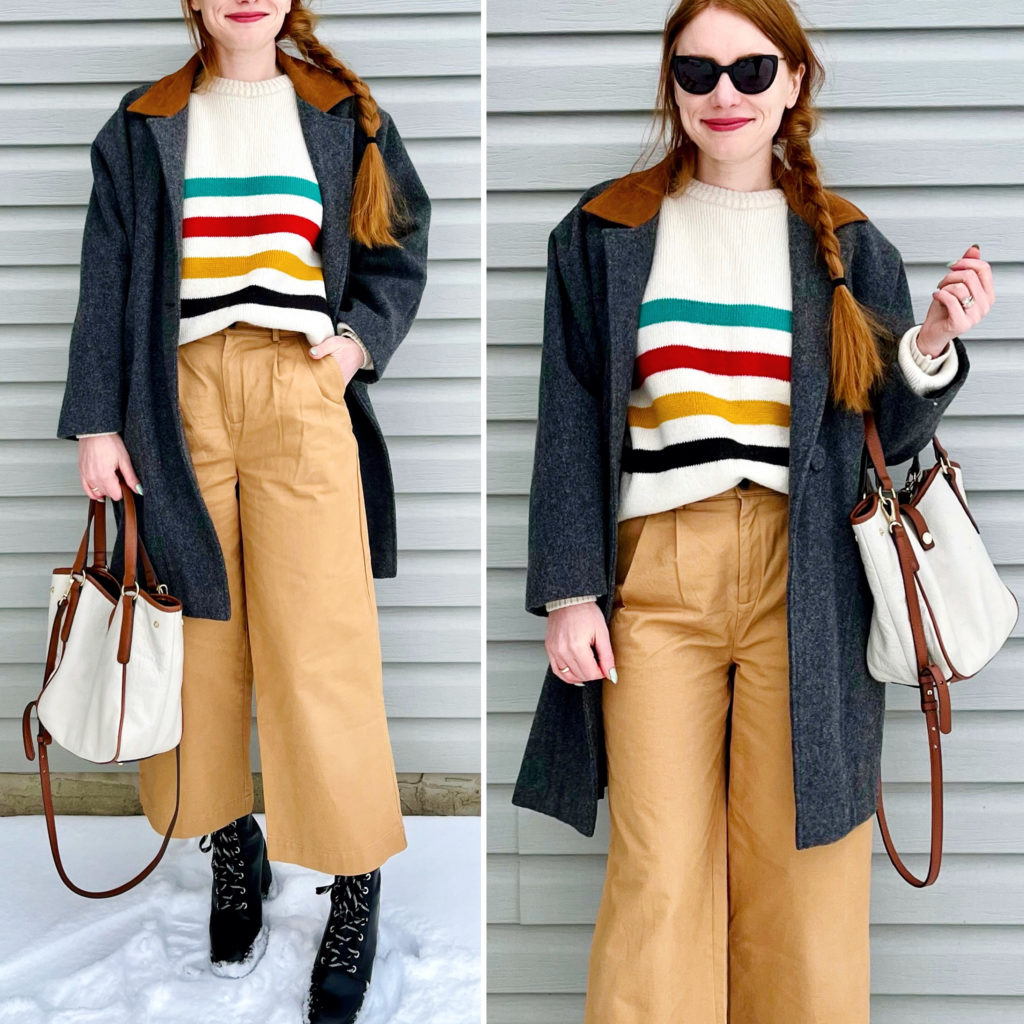
Details: vintage sweater, Icone pants, American Apparel coat, Tommy Hilfiger bag, Office London shoes (all thrifted)
Thoughts: Hopefully this will be the last time you see snow in these photos until next winter, but here’s one last hurrah for the past season. This sweater was one of its MVPs, for sure.

